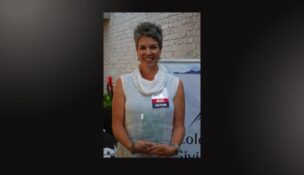Stained Glass Masters
For 150 years, the Watkins family has excelled in delicate craft
Suzie Romig //February 22, 2019//


Stained Glass Masters
For 150 years, the Watkins family has excelled in delicate craft
Suzie Romig //February 22, 2019//

In churches, museums, mausoleums, businesses, mansions and bungalows throughout greater Denver, an estimated 70 percent of the traditional stained glass works of art are creations or restorations by four generations of Watkins family artists.
Watkins Stained Glass Studio in Englewood just celebrated 150 years as a family business in Colorado. Clarence Watkins began the family’s painstaking leaded glass work in 1868, followed by son Frank, grandson Phil Sr. and great-grandson Phil Jr., 71, who now runs the company with his wife and business manager, Jane. The family artistry dates back eight generations to 1761 in England. The only times the Watkins family did not work in stained glass were during World Wars I and II, when lead was appropriated for bullets.
Since 1955, Phil Watkins has worked on pieces for more than 4,000 homes, 380 churches and 100 commercial buildings. Customers may wait two years for the small company’s renowned expertise in religious, restoration and custom stained glass.
“The mastery of the craft that Phil exemplifies is really extraordinary,” says Marianna McJimsey, historian at the gothic revival Grace and St. Stephen’s Episcopal Church in Colorado Springs, who is currently working with Watkins on a delicate restoration of a Resurrection Window from 1919 that she calls priceless. “He has learned on the job all his life. From the customer point of view, he cogitates about a problem, but you always know in the end that Phil has concluded the correct answers from his experience, observation and intelligence.”
Jane Watkins says their business secret is “not compromising time or quality and keeping very high standards of craftsmanship and art, keeping the family tradition of fine stained glass, new window and restoration alive so windows will be enjoyed for centuries.”
Phil moves the projects through 10 fairly distinct steps, including sketch, cartoon, glass selection, patterning, glass cutting, painting, kiln firing, waxing, glazing and cementing. The company maintains a carefully stored collection of thousands of feet of antique European glass, much of which is no longer made and has been acquired by the Watkins family for a century.
Although the company is known for exquisite church windows that can cost up to $3,000 per square foot for finely painted stained glass, simpler church windows average $600 per square foot. Their kitchen cabinet stained glass windows start at $100 per square foot.
One of the most rewarding projects for the couple was 10 months of work across two summers in 2013 and 2014 to restore windows at the Colorado State Capital, including a window created by great-grandfather Clarence.
“It amazes me that they did as good a job back in the day. It’s the same type of construction I still use,” says Phil, who benefits from even heat from an electric-powered soldering iron while his great-grandfather heated a soldering iron on a charcoal stove or by kerosene blowtorch.
Phil says his favorite and most challenging new window was a 10-by-20-foot extremely complex design based on Leonardo da Vinci’s “The Last Supper.” The project required 15 months of work for Our Lady of the Snow Catholic Church in Granby.
An extroverted art history major at University of Colorado-Boulder, Jane met the quieter studio art major Phil in 1970 in a Colorado history class. They have been married 45 years and have three grown daughters, who are working in other professions. Jane says with a smile that one of her four grandsons taking art classes as youngsters might someday join the family business.
In the meantime, the company is working toward creating an internship program in Old English style stained glass with Denver-based Spectrum General Contractors, with whom they most recently worked to restore a window at the Molly Brown House Museum.
“Every single project we’ve had with them has been an unmitigated success,” Historic Denver Deputy Director John Olson says. “They are salvaging as much of the original materials as possible, at the same time making sure it is structurally sound and can last well into the future.”

























